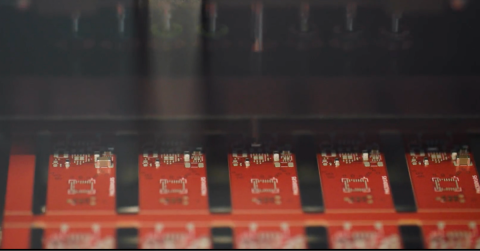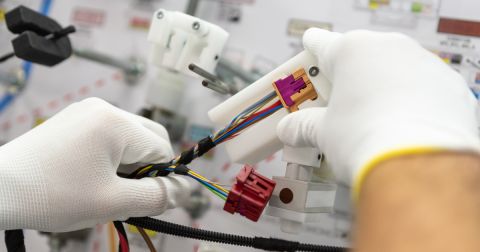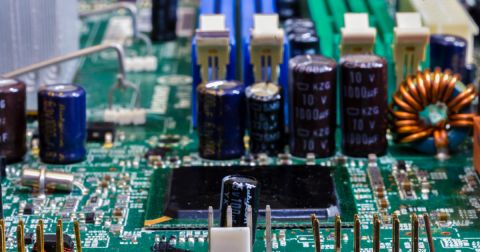How Altium Designer Empowers Designers to Master Complex PCB Projects

In order to effectively manage the growing complexities of printed circuit boards (PCBs), you need access to tools that can keep up with rapid technological evolution while efficiently managing the design process just the same. Altium Designer offers a powerful set of features tailored to overcome the challenges of modern PCB design, making it an indispensable asset for various demanding projects in this field, as demonstrated by the following attributes.
Constraint Management
Managing design constraints is crucial to creating complex, high-performance electronic devices. Altium Designer's advanced constraint management system exemplifies its grasp of the complex challenges present in contemporary PCB projects. It gives you the tools and versatility needed to expertly manage the intricate web of design rules and constraints, fostering an environment where innovation meets precise compliance.

Adaptive Constraint Management
Altium Designer's constraint management system is distinguished by its dynamic nature, allowing for real-time adjustments to suit the changing needs of a project. This flexibility is invaluable in intricate projects where initial plans may evolve, requiring adjustments to design assumptions. The system's swift identification and correction of deviations from set constraints ensure that potential problems are addressed early, minimizing the need for expensive modifications or compromising the device's performance.
Hierarchical and Conditional Rules
By supporting hierarchical and conditional rules, Altium Designer further refines the process of constraint management. You can set priority levels for constraints, guaranteeing that essential criteria are satisfied while allowing for adjustments in areas with more lenient requirements. Conditional rules offer the ability to apply specific constraints under defined conditions, adding a layer of dynamism and adaptability to the design process tailored to each project's unique challenges.
Real-time Violation Detection
A standout feature of Altium Designer's constraint management is its immediate violation alert system. As you lay out the PCB, the software actively compares the design against the established rules and constraints, flagging any discrepancies in real-time. This proactive stance not only streamlines the design process but also drastically lowers the risk of expensive errors and subsequent rework.
Comprehensive Design Capabilities
Altium Designer is engineered to meet a wide array of PCB design requirements, spanning from High Density Interconnect (HDI) and swift electronic layouts to comprehensive multi-board assemblies, intricate wiring harnesses, and versatile rigid-flex PCB constructions. Its adaptability gives you the power to navigate various project types on a unified platform, enhancing the design workflow and diminishing the reliance on disparate software applications. The facility to manage HDI designs is particularly vital in today's electronics sphere, driven by the quest for more compact, yet increasingly potent devices necessitating cutting-edge PCB technologies.

Effective High-Speed Electronic Design
As high-speed digital technologies become more widespread, signal integrity only becomes more important to maintain. Armed with sophisticated routing functionalities and simulation features, Altium Designer helps you overcome such challenges. It includes tools for precise management of differential pairs, impedance control, and routing high-velocity signals to meet specific length and delay requirements, guarding against common issues like signal crosstalk and reflections in high-speed designs.
Multi-Board Assembly Design
Relying on a single PCB is often insufficient in the context of complex electronic systems. Through its multi-board project feature, Altium Designer allows you to develop multiple PCBs within a singular project framework, ensuring smooth coordination across different boards. This comprehensive strategy guarantees uniformity, streamlines the design process, and bolsters the dependability of the end product, making it indispensable for expansive projects typical in the automotive and aerospace sectors, where the margin for error is minimal.
Designing for Harnesses and Rigid-Flex Circuits
Crafting cable harnesses and rigid-flex PCBs is another important part of creating devices that demand pliable interconnections housed within confined layouts. Altium Designer supports these design types, providing you with the necessary tools to produce PCBs that incorporate both rigid and flexible components. This addresses the requirements of devices that need to withstand bending and folding, which is particularly valuable in wearable tech, portable gadgets, and other space-sensitive applications where design flexibility is paramount.
Interactive and 3D Routing
Altium Designer's Interactive and 3D Routing tools are pivotal for tackling the complex challenges of modern PCB designs, offering both precise control over the routing process and an in-depth examination of layouts in three-dimensional space. Interactive Routing enables immediate adjustments to trace distances, pathways, and via placements, ensuring designs meet project-specific demands and address critical factors like HDI design, signal integrity, and electromagnetic compatibility. Meanwhile, 3D Routing enhances the ability to explore and optimize PCB layouts in a 3D environment, crucial for integrating electronic circuitry with mechanical designs through 3D Molded Interconnect Device (MID) technology. This blend of control and visualization is increasingly vital as electronics become smaller and more complex.

Commanding the Design Process With Interactive Routing
Altium Designer revolutionizes the PCB layout phase with its interactive routing feature, allowing you to precisely control the routing of board traces, moving beyond traditional auto-routing methods that may miss the finer points of a design. This capability merges automated efficiency with the nuanced judgment of experienced designers, allowing for the meticulous adjustment of trace spacing, routing paths, and via placement in real time to meet the project's unique requirements. By ensuring key design elements like signal integrity, timing constraints, and electromagnetic compatibility are strictly observed, Altium Designer's interactive routing facilitates the early detection and resolution of potential issues, significantly reducing the need for post-design modifications.
A New Dimension in Design Visualization With 3D Routing
3D-Molded Interconnect Device (3D-MID) technology represents a significant leap forward in PCB design, enabling the application of electronic circuits directly onto three-dimensional plastic substrates. This innovation transcends traditional flat PCB constraints, broadening design possibilities for electronic products. Altium Designer capitalizes on this technology, offering a suite of tools to craft and visualize PCBs in a true three-dimensional context. This is especially key to electronics destined for compact and irregular spaces, such as wearable devices and advanced medical equipment. Altium Designer's support for 3D-MID facilitates an unprecedented integration of electronic and mechanical components, allowing for the creation of more compact products with seamlessly integrated circuits that maximize space efficiency.
Communicating Design Intent
Moreover, these routing features enhance team collaboration and communication, both internally among designers and externally with manufacturing entities. Sharing and reviewing vivid 3D models simplifies the process of conveying design intentions and gathering feedback. This collective approach smooths the transition from design to manufacturing, minimizing the risks of miscommunication and errors that could delay production timelines and inflate costs.
High Density Interconnect (HDI) Design
Altium Designer's focus on High Density Interconnect (HDI) Design showcases its dedication to the newest PCB technologies. Essential for today's electronics, HDI technology allows for the creation of compact, high-performance circuits. With features like advanced routing options, support for microvias, and comprehensive layer stack management, Altium Designer enables the development of tightly integrated, densely arranged circuits.

Advanced Routing Solutions
One of the cornerstones of HDI design is the ability to efficiently manage routing in densely packed layouts. Altium Designer rises to this challenge with advanced routing technologies that simplify the complexity involved in routing numerous signals in tight spaces. Features such as auto-interactive routing, differential pair routing, and tight turn routing are essential for HDI designs. They help you minimize signal cross-talk and impedance mismatches, crucial factors in maintaining signal integrity in high-speed circuits.
Microvia Support
Microvias play a critical role in HDI PCBs, enabling interconnections between layers in a much smaller footprint than traditional vias. Altium Designer provides comprehensive microvia support, so you can implement these essential elements accurately and efficiently. This support includes the ability to define microvia sizes, depths, and layer transitions, ensuring that the microvias fit seamlessly into the HDI design. By facilitating the use of microvias, Altium Designer allows for more layers to be packed into a smaller space, increasing the circuit density without compromising performance.
Layer Stack Management
The intricacy of HDI PCBs often demands a multi-layered approach, making layer stack management a critical concern. Altium Designer offers comprehensive tools for detailed organization and visualization of multiple layer configurations, covering signal, power, ground layers, and impedance control. This capability is crucial for HDI design, as it impacts the PCBs electrical performance, thermal management, structural and signal integrity. Effective management of layer stacks is key to achieving a design that is both functional and reliable.
Conclusion
Altium Designer stands out as an essential tool for designers and engineers, equipped with a suite of features tailored to the demands of modern PCB design. Its advanced constraint management, dynamic design capabilities, and HDI technology enable the creation of compact, high-performance circuits. With exceptional routing options like interactive and 3D routing and advanced layout technology, Altium Designer drives innovation, ensuring consistency and seamless project execution across multi-board designs, high-speed electronics, and rigid-flex circuits. More than just meeting current design requirements, Altium Designer anticipates future industry trends, making it a key player in achieving excellence in electronics design and manufacturing.










